Current Climate Policies
As a small island developing state (SIDS), Saint Lucia is disproportionately vulnerable to the impacts of climate change and other external shocks and faces considerable capacity constraints and a lack of internal funding because of high levels of debt, all of which limit the island's capacity to adequately respond to climate change-related challenges. Saint Lucia’s climate change priorities are enshrined in a strong policy and programmatic framework, which seeks to reduce greenhouse gas emissions and strengthen Saint Lucia’s resilience to climate change impacts. The programmatic and policy framework is being implemented through a number of policies and strategies, which includes, inter alia:
Click Images
 Saint Lucia’s Nationally Determined Contribution
Saint Lucia’s Nationally Determined Contribution
In line with Article 4 of the Paris Agreement, Saint Lucia is committed to limiting the global average temperature increase to 1.5°C above pre-industrial levels in its Nationally Determined Contributions (NDCs). Within its NDCs Saint Lucia has set a conditional target of reducing Green House Gas (GHG) emissions by 16% by 2025, with an indicative reduction of 23% by 2030. These targets focus on three main areas: energy demand, electricity generation and transport.
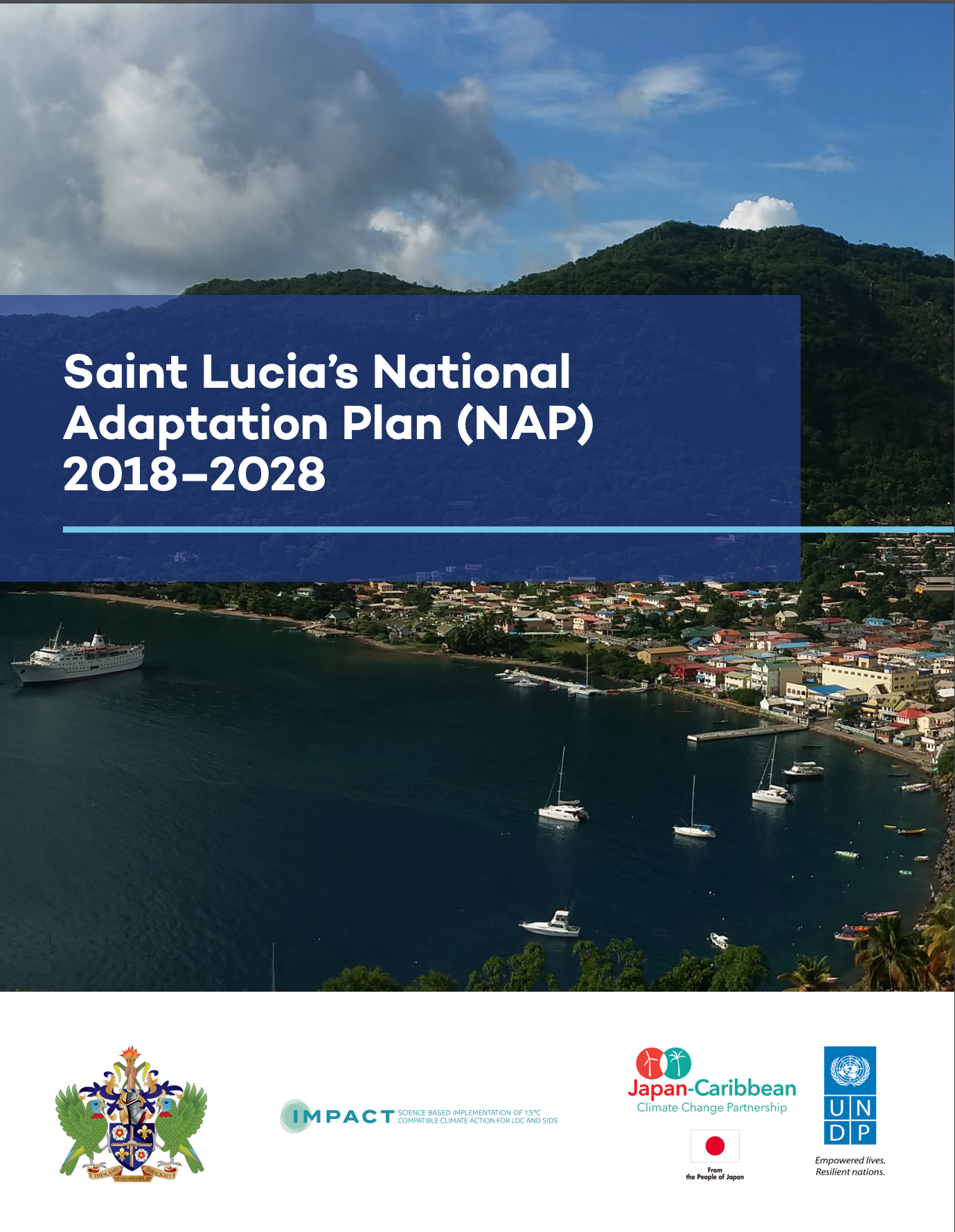 Saint Lucia’s National Adaptation Plan
Saint Lucia’s National Adaptation Plan
Saint Lucia’s National Adaptation Plan (NAP) is a ten (10)‐year process (2018‐2028). The NAP outlines priority cross‐sectoral and sectoral adaptation measures for eight key sectors and highlights limits to adaptation, complemented, with Sectoral Adaptation Strategies & Action Plans (SASAPs). NAP priority sectors are tourism, water, Agriculture, and fisheries; infrastructure and spatial planning; Natural resource management (terrestrial, coastal and marine); Education; and Health.
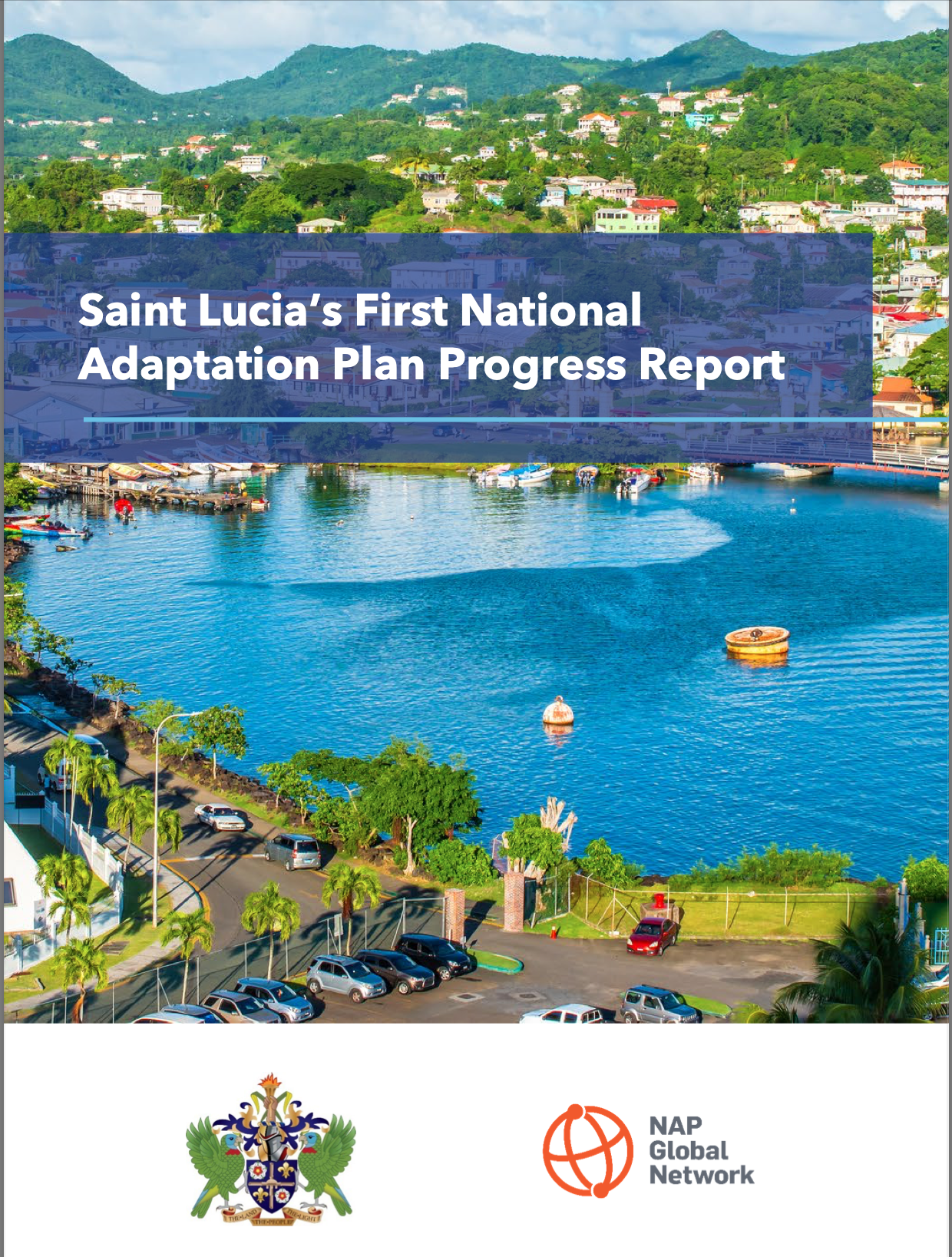 Saint Lucia’s National Adaptation Plan (NAP) Progress Report 2018-2021
Saint Lucia’s National Adaptation Plan (NAP) Progress Report 2018-2021
This NAP progress report presents the progress that Saint Lucia has made in adaptation action since the launch of the country’s NAP. It highlights the nexus between planned and implemented adaptation actions in Saint Lucia under its NAP and the commitments outlined in its recently updated nationally determined contribution.
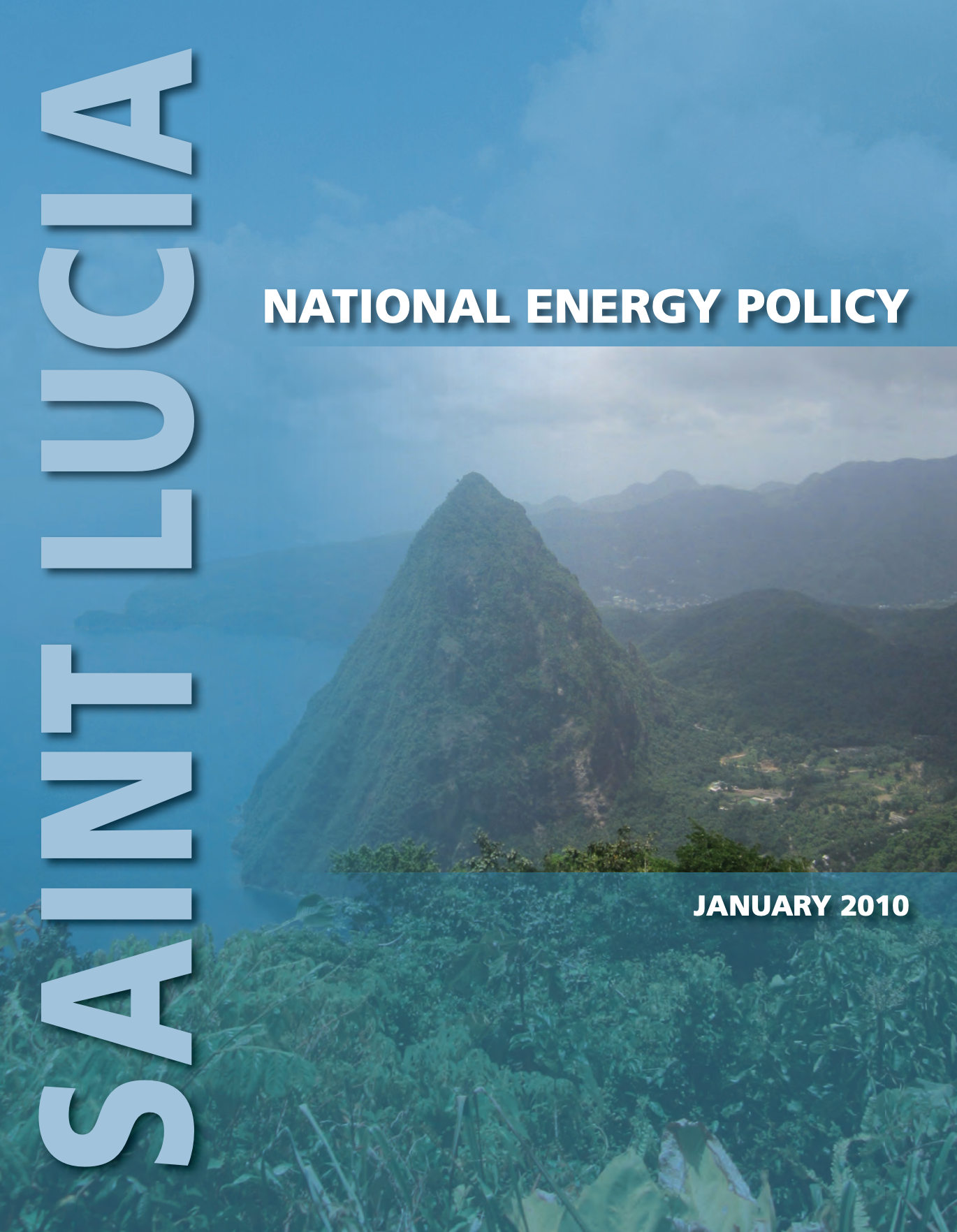 Saint Lucia's National Energy Policy
Saint Lucia's National Energy Policy
In 2001, Saint Lucia's Cabinet approved a Sustainable Energy Plan. One of the goals identified by the Plan was to enhance the security of energy supply and use for all sectors of the economy. A key objective of the proposed National Energy Policy is therefore to create an enabling environment, both regulatory and institutional, for the introduction of indigenous renewable energy to the national energy mix, thus achieving greater energy security and independence.
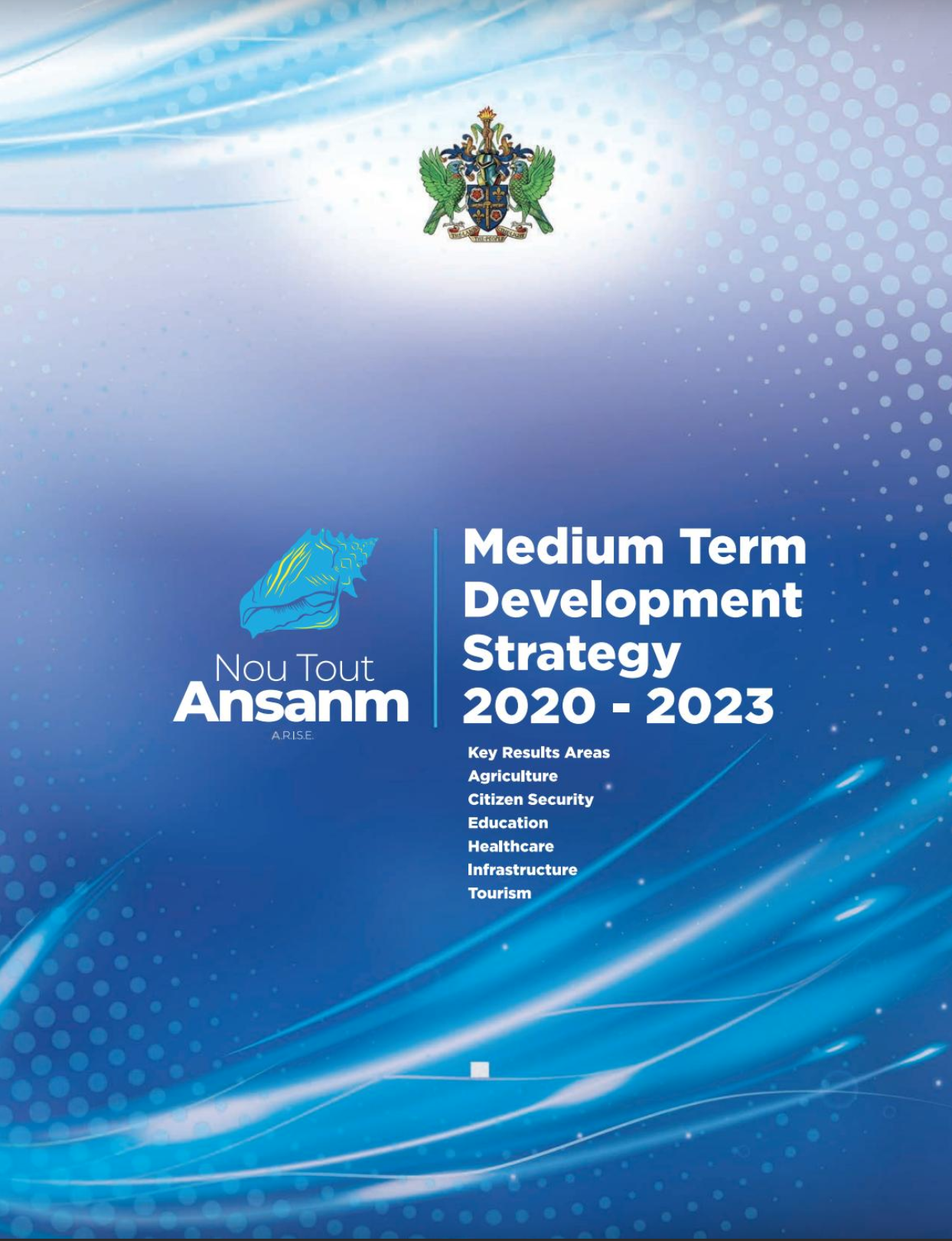 St. Lucia’s Medium-Term Devt. Strategy 2020 – 2023
St. Lucia’s Medium-Term Devt. Strategy 2020 – 2023
The Medium-Term Development Strategy is the related prioritised action plan, spanning a three- or five-year period and encompassing all areas of government activity. It sets development goals and priorities. The Economic Planning Unit of the Ministry of Finance, Economic Affairs, Planning and Social Security plays a pivotal role in the preparation, implementation and monitoring of the Medium-Term Development Strategy.
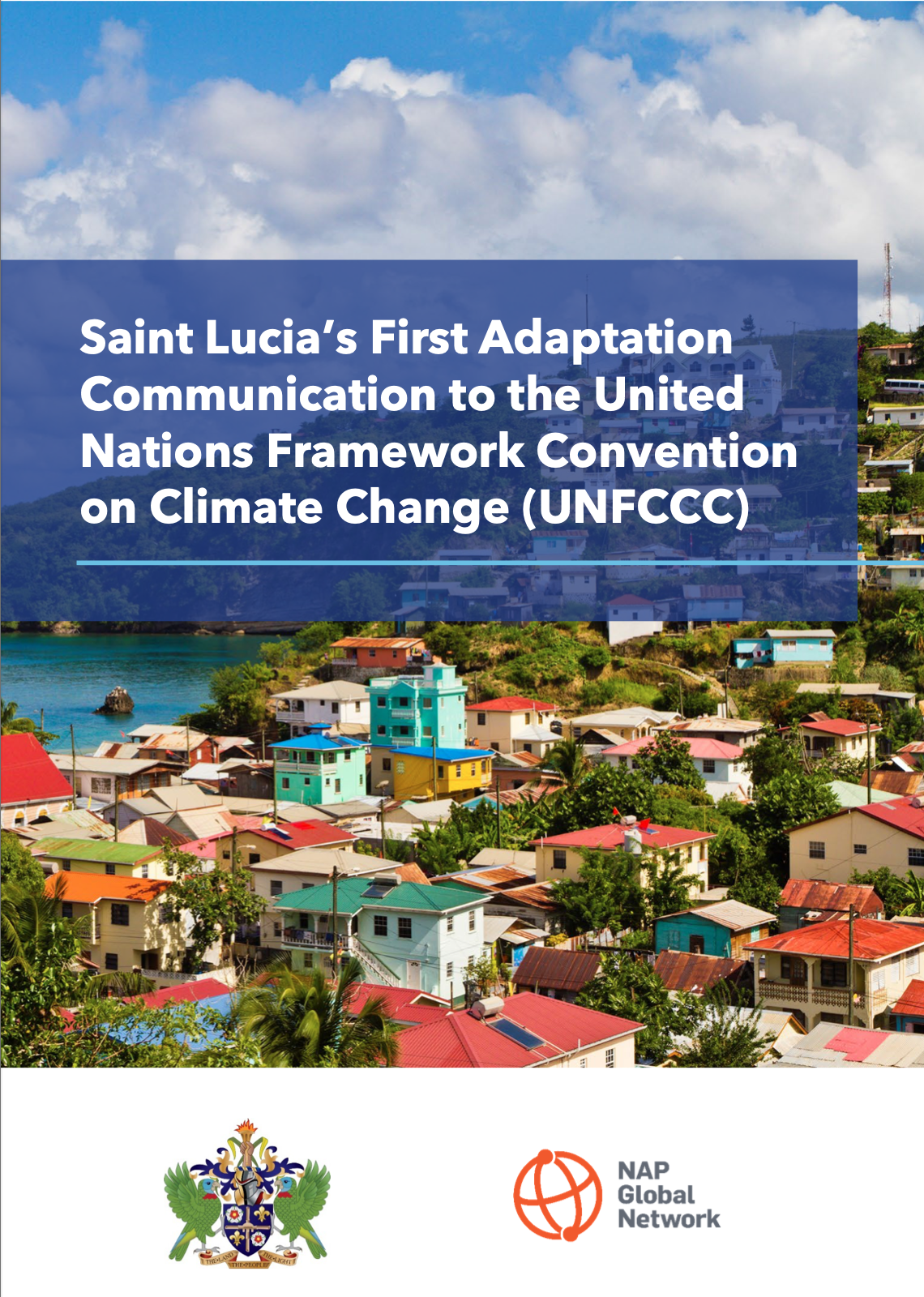 Saint Lucia’s Adaptation Communication (AdCom) to the UNFCCC
Saint Lucia’s Adaptation Communication (AdCom) to the UNFCCC
In line with the Paris Agreement, Saint Lucia should submit and update periodically an Adaptation Communication (AdCom), outlining its priorities, implementation, and support needs, plans and actions to:
- Increase the visibility and profile of adaptation and its balance with mitigation;
- Strengthen adaptation action and support for developing countries;
- Provide input to the global stocktake (GST) to assess progress made towards achieving the purpose of the Paris Agreement and its long-term goals;
- Enhance learning and understanding of adaptation needs and actions.





